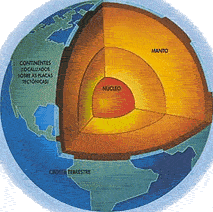 The RNA or Ribonucleic Acid It is a molecule that fulfills an important function by allowing the information contained in DNA to be copied, transporting it to the cellular structures responsible for elaborating the different proteins and also forming part of the machinery in which the production of the latter is carried out.
The RNA or Ribonucleic Acid It is a molecule that fulfills an important function by allowing the information contained in DNA to be copied, transporting it to the cellular structures responsible for elaborating the different proteins and also forming part of the machinery in which the production of the latter is carried out.
Unlike DNA, which is a double-stranded molecule, RNA is single-stranded and has a ribose molecule in its composition which is responsible for its name. There are three types of RNA, each with a specific function within this process, they are:
Messenger RNA (mRNA). This molecule originates by copying a segment of DNA that has the information for a certain protein, which is known as a gene, each mRNA has the information for a specific protein and there are as many mRNAs as possible types of proteins. The mRNA can be described as a kind of template or recipe that contains the information that specifies the way in which the amino acids should be placed in order to be able to manufacture each of the different proteins. The code contained in this molecule is written with only four bases or nucleotides (adenine, uracil, guanine and cytosine) that are grouped three by three forming triplets, which are the units of genetic information also called the genetic code.
Transfer RNA (tRNA). This molecule is involved in the decoding of the message and binds on the one hand to the messenger RNA molecule and on the other to the amino acid corresponding to the triplet that is being decoded. It could be said that this molecule fulfills the function of a translator or interpreter of genetic information.
Ribosomal RNA (rRNA). This type of RNA joins a group of proteins called ribosomal proteins in order to constitute ribosomes, which are structures located in the cytoplasm of cells and whose function is to carry out the translation process, in which the proteins are synthesized. different proteins from the information contained in the messenger RNA. Ribosomes are capable of recognizing two types of triplets that do not code for any amino acid, they are rather codes that allow you to know when the information for a protein is starting and when it has finished so that the culmination and release of this new molecules.
In the case of microorganisms such as viruses, some of them do not have DNA, so their RNA is the only molecule that contains genetic information, which is capable of replicating itself in the machinery of the cells of the host it has infected.









